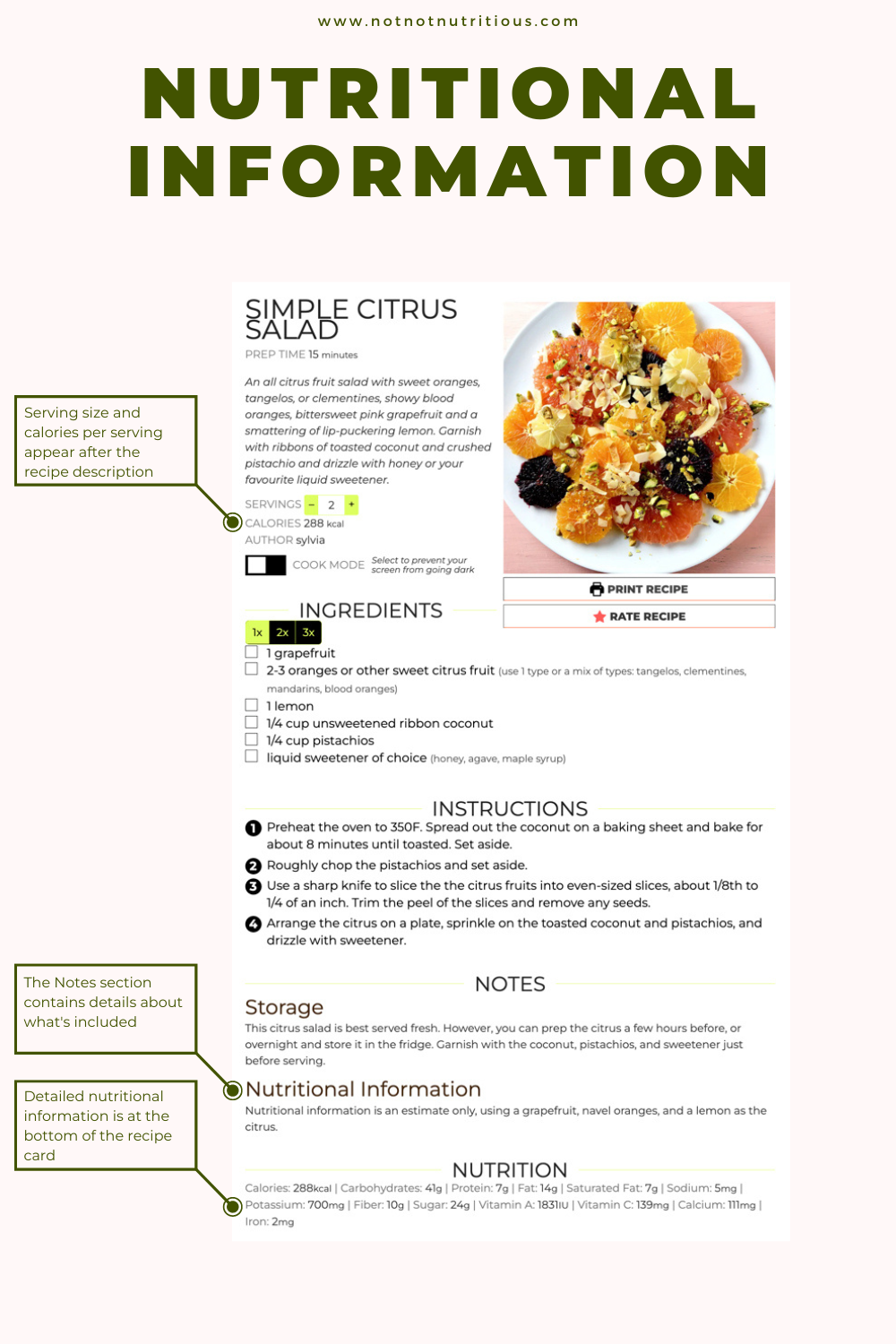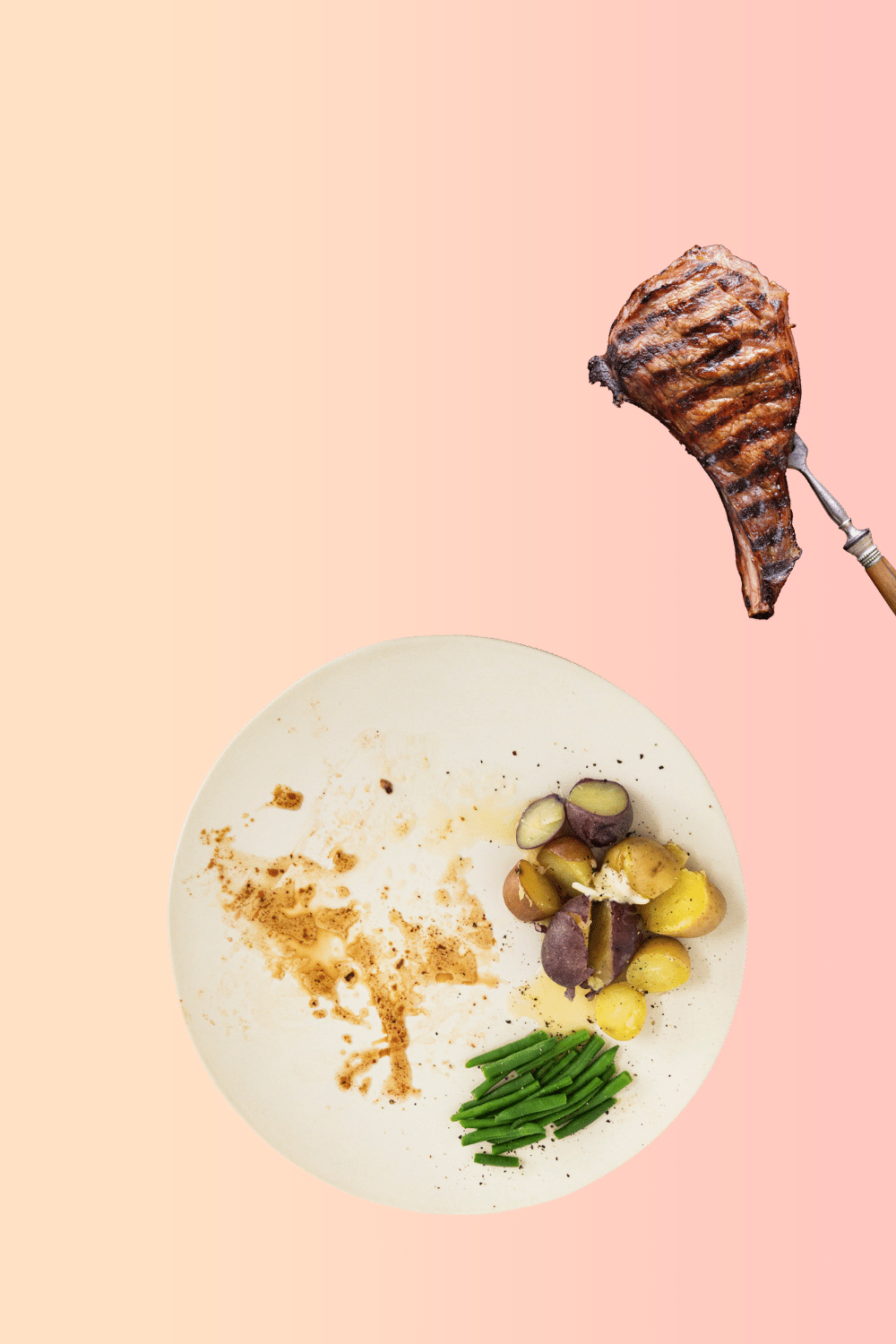Maybe it's the false impression that a plant-based diet consists solely of raw veggies, or perhaps it's because many people think: "protein means meat." Whatever the reason, one of the most frequently-asked questions about plant-based eating is: "Where do you get your protein?"
If you're thinking of moving to a plant-based diet, or adding more plant-based meals into your repertoire, let us reassure you -- it's not hard to get enough protein on a plant-based diet.
In this article, we start with the basics, describing what protein is and why it's necessary for your body. We dispel the myth that plants don't provide protein. Next we look at key plant-based protein sources, including the legume family, whole grains, and nuts and seeds.
We show how you can create a protein-packed meal using layers of protein. Finally, we share how to calculate your protein requirements based on common guidelines, how to calculate calories by counting macronutrients, and where you can find nutritional information in our recipes.
Read the article straight through or use the Table of Contents to link quickly to specific content. We hope you find it useful and we'd love your questions and comments.
Sylvia
founder, not not nutritious.com
Learn more about us
Table of Contents
The Basics
Explore plant-based protein sources
Putting it all together
What is protein?
Protein is one of the three macronutrients. Fat and carbohydrates are the other two. They're called macronutrients as we need to eat them in relatively large quantities.
Our body also needs micronutrients, such as vitamins and minerals, but as the name implies, we need these in smaller quantities.
What is protein?
Protein is one of the three macronutrients. Fat and carbohydrates are the other two. They're called macronutrients as we need to eat them in relatively large quantities.
Our body also needs micronutrients, such as vitamins and minerals, but as the name implies, we need these in smaller quantities.
Protein is essential:
Our bodies cannot create protein so we must get it by eating it.
Protein comes from plants and animals:
All animals and plants contain protein. For example, chicken has 27 grams of protein per 100 grams, while pistachios have 20 grams of protein per 100 grams.
Dispelling the myth
While it's true that meat, poultry, and eggs are excellent sources of protein, it's not necessary to eat animal products to get protein.
All types of plants contain protein. For example, a whopping 67% of the calories in watercress come from protein. Other leafy greens, such as spinach, also contain high percentages of protein.
However, the percentage of protein calories is just part of the equation. In the case of leafy greens like watercress and spinach, they also contain a very high percentage of water. Watercress is about 94% water. So, even though it's high in protein, relative to the two other macronutrients: fat and carbohydrates, a one cup serving (34 grams) contains less than 1 gram of protein (.782 according to USDA). You would have to eat about 77 cups to obtain the FDA's recommended daily average of 50 grams of protein.
Watercress has a whopping 67% of its calories as protein calories. However, watercress is also 94% water.* Every cup of watercress has less than 1 gram of protein. It would take a small mountain (about 77 cups!) to obtain a daily requirement of 50 grams.
*Water has no calories and is not included in the macronutrient calculation.
So if you want to eat plant-based but don't want to spend your whole day eating, what type of plants should you eat?
One word: Legumes
Legumes include beans, lentils, peas, and soybeans. They are high in protein - on average they have about 31% protein calories - and they have less water content than leafy greens.
The takeaway: foods in the legume family are one of the most important protein sources for plant-based eaters.
The legume family and protein
All categories of plants contain some amounts of protein, and foods within the legume category are the best single source of protein in a plant-based diet. The infographic below shows common foods from the legume family, grouped by category. The categories don't match perfectly with their scientific classifications. Instead, they are grouped by familiar names.
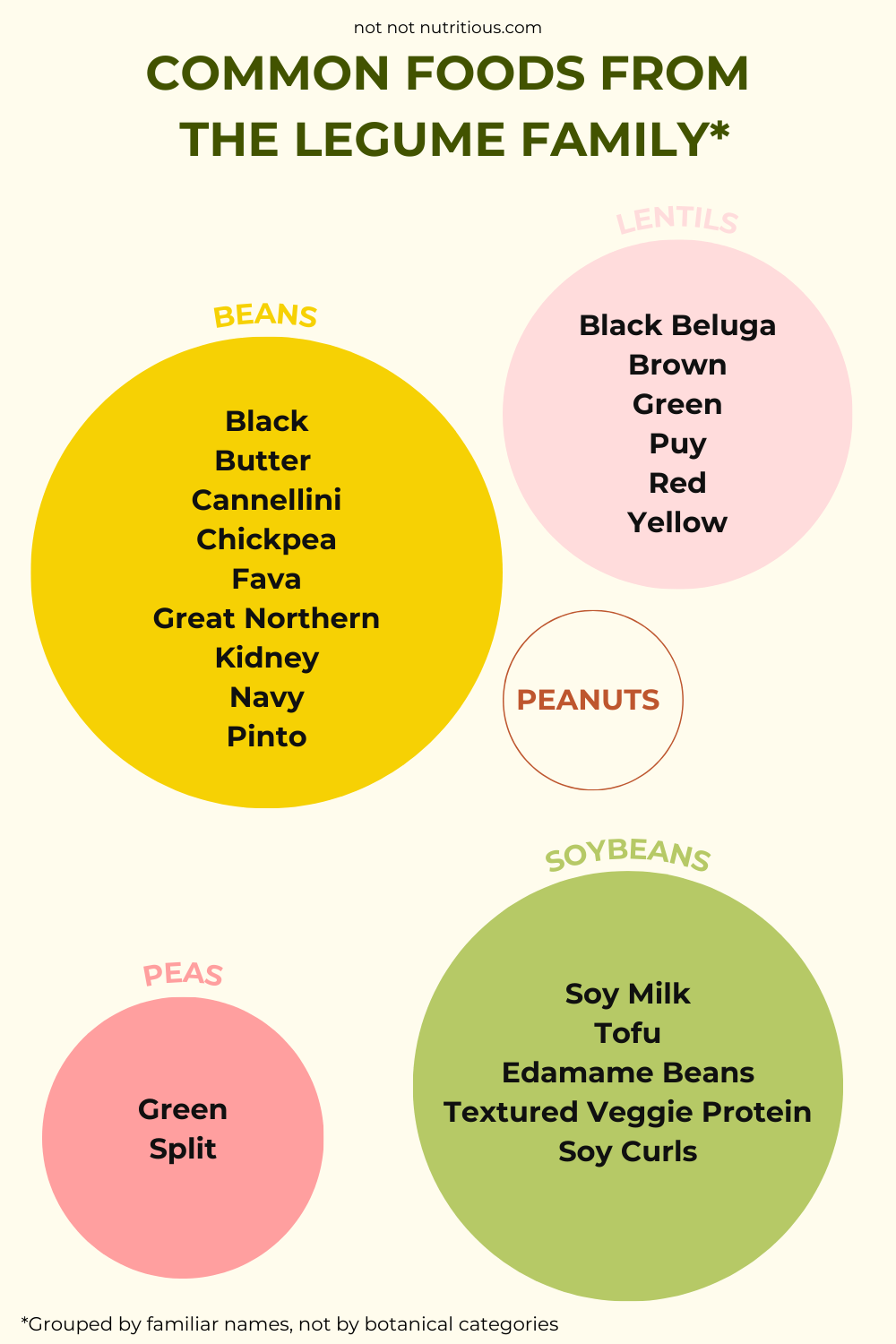
Click or tap each button to take a closer look at each of these categories.
Beans
Description
Beans are a type of legume. While there are an estimated 400 types of beans in the world, this list represents some of the more commonly used beans in North America.
Buying and preparing
You can buy beans in dry, uncooked form, or cooked in cans or jars. While both uncooked and cooked beans are relatively inexpensive, purchasing dry beans is less expensive than purchasing cooked. However, cooked beans are ready to eat out of the can, while dry beans are usually soaked overnight and then cooked, meaning a longer preparation time.
Soaking:
After soaking, beans typically take at least an hour to cook stove-top. Depending on the age and type of the bean, it might take up to 3 hours.
You can speed up the cooking time by using a pressure cooker, insta-pot, or similar device. However, even if you're cooking them in a regular pot, the upside is that they don't need a lot of tending to.
After soaking and cooking beans expand to 2-3 times their original size.
Protein Amounts
Here's the protein content per 100 grams (about 3.5 ounces) of uncooked beans.
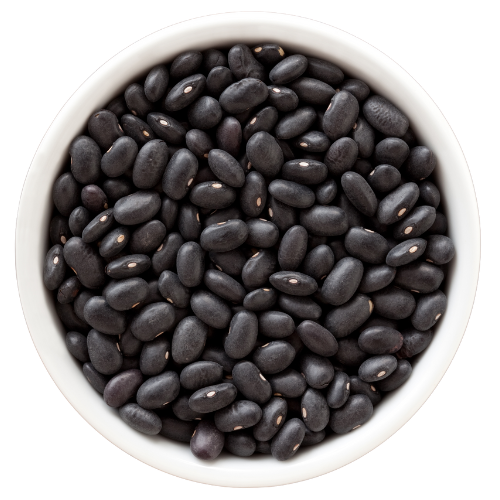
Black beans
26 grams
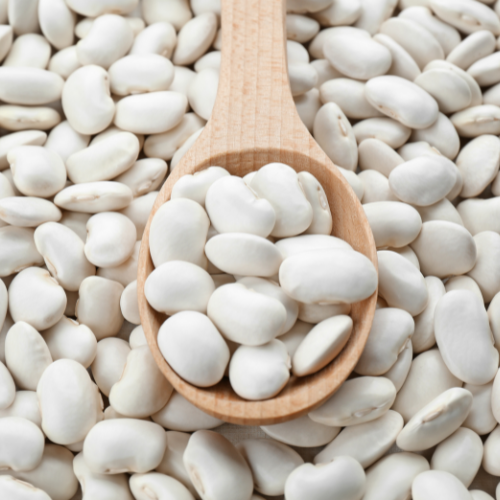
Butter/Lima
21 grams
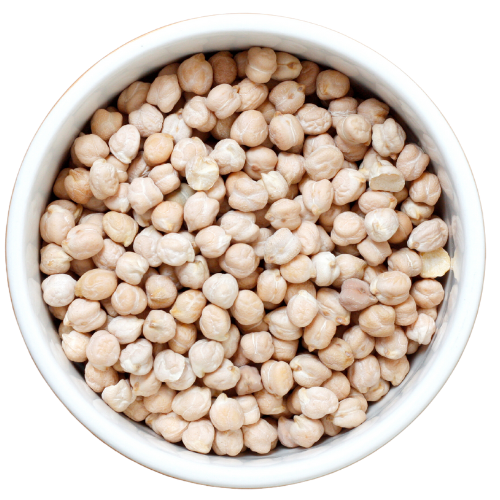
chickpea/Garbanzo
19 grams
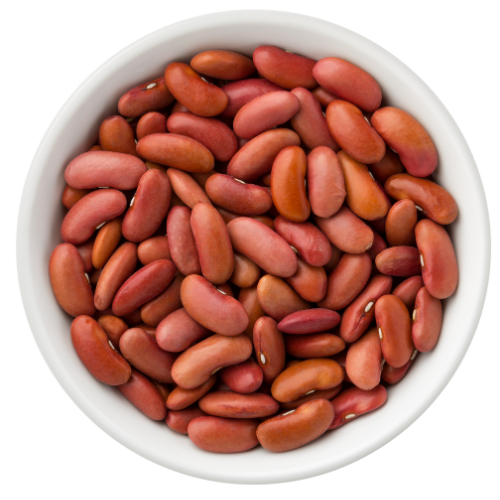
kidney beans
24 grams
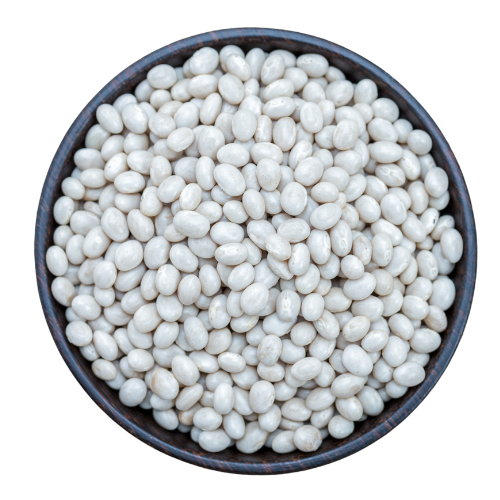
Navy beans
22 Grams
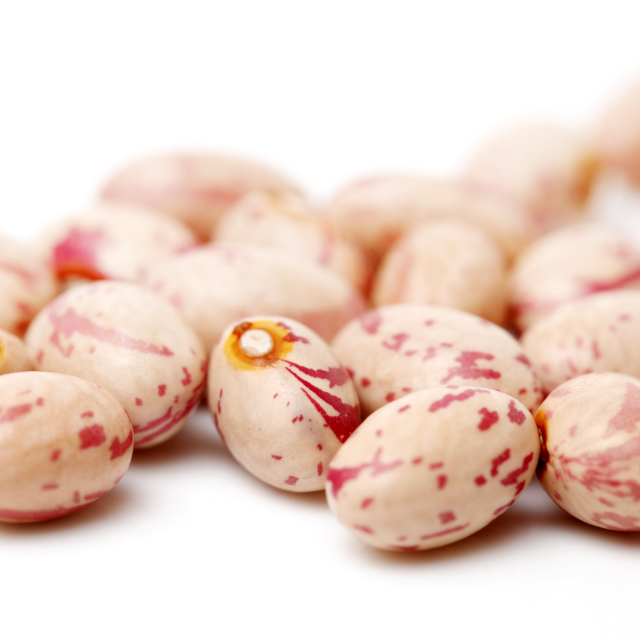
pinto beans
19 grams
Recipe ideas
Beans are very versatile and pair well with different flavour combinations.
Garlicky, full of leafy greens, sweet tomatoes, and spicy plant-based sausage, this cozy soup is a hearty, protein-rich meal-in-a-bowl. Perfect ...
A plant-based, meal in a bowl made with canned crushed tomatoes, coconut milk, pineapple, and spices, this 1-Pot Spicy Black ...
Fast, filling, and flavourful, this Thai-inspired Chickpea Curry features red curry paste, coconut milk, ginger, pineapple, and tomatoes. You can ...
This 3 ingredient sun-dried tomato hummus is perfect for when you need something quick flavourful, and filling. Preparing 3-Ingredient Sun-Dried ...
Infographic: Using beans in plant-based cooking
Beans are a versatile, inexpensive source of protein, and are often used to replace meat in plant-based cooking.
You can buy beans dry/uncooked or cooked. Uncooked is less expensive but takes more preparation time, as they are typically soaked before cooking.
You can click or tap the infographic to enlarge it and zoom in.
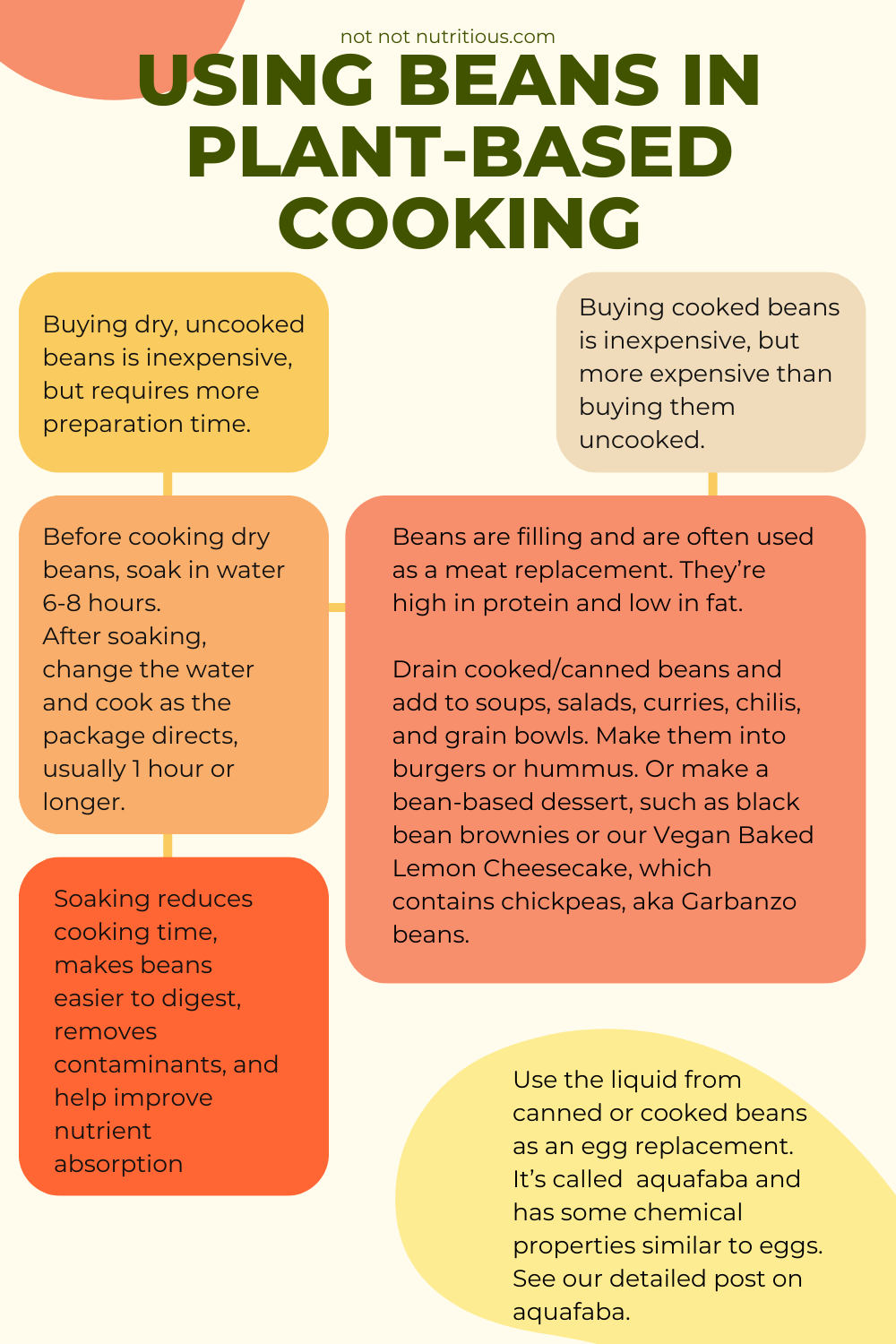
Lentils
Description
Lentils are a type of legume. There are a variety of different colours of lentils.
Buying and Preparing
Lentils are sold in dry, uncooked form, and also in cans, cooked. Unlike beans, lentils do not need to be soaked before cooking. Lentils cook relatively quickly, with red lentils cooking in about 5-15 minutes, depending on their age and the preferred final texture.
After cooking, lentils will expand about 2 and a half times their original size. Lentils will also lose some of their colour when cooked. Some lentils get mushy easily, such as red lentils, while others will hold their shape (Black Beluga, and Puy).
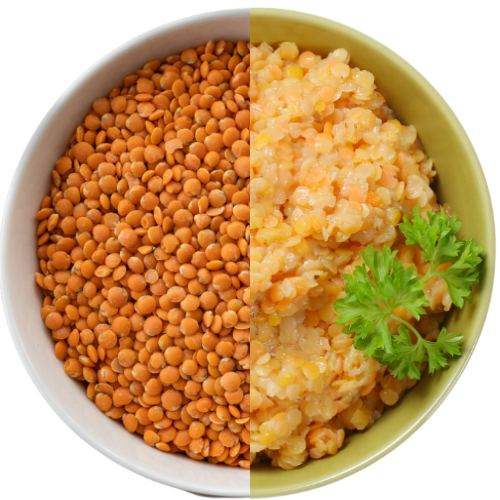
Uncooked versus cooked red lentils.
Protein
Here's the protein content per 100 grams (about 3.5 ounces) of uncooked lentils.
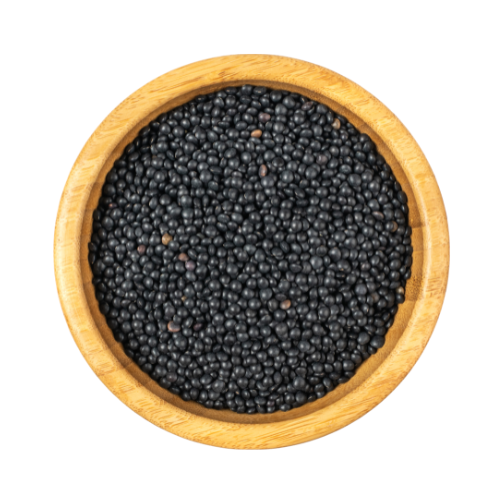
Black Beluga
26 grams
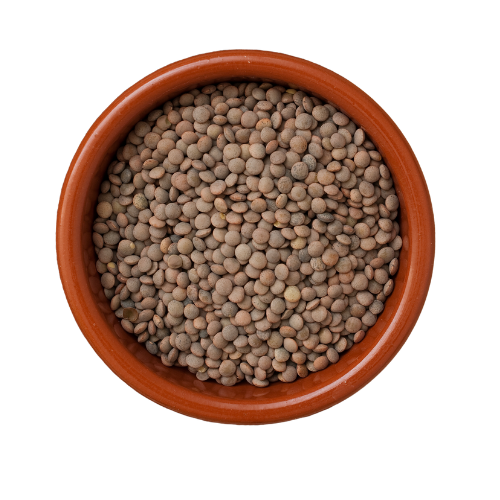
Brown
21 grams
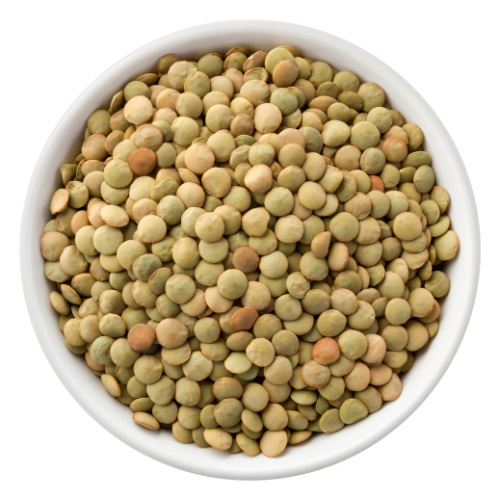
Green
22 grams
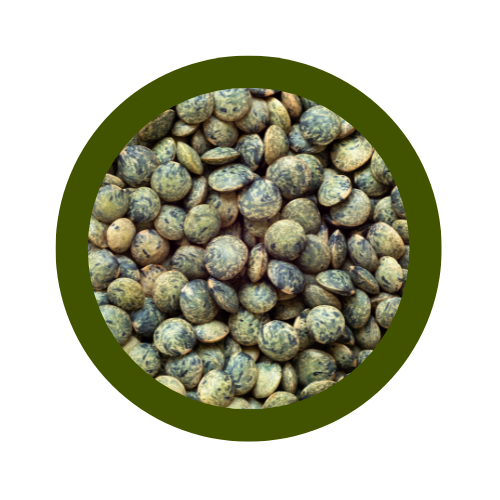
Puy (French Green)
24 grams
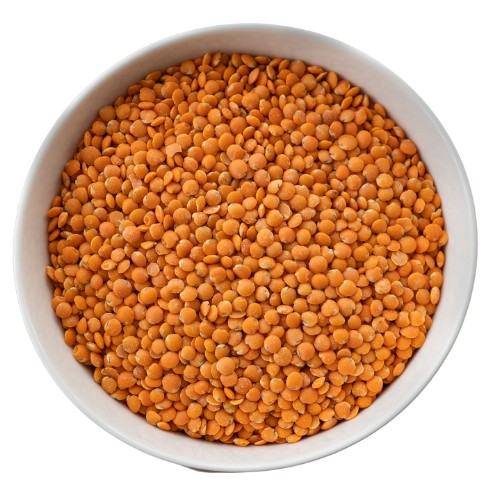
REd
22 grams
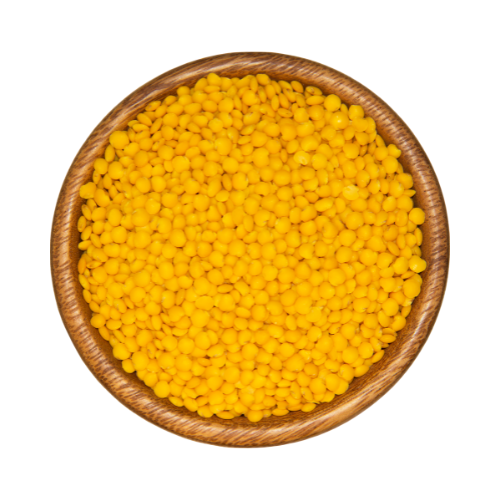
Yellow
19 grams
Recipe ideas
Calling all Indian-food lovers! Meet your new favourite recipe -- a make-it-all in one pot, plant-based bowl of goodness: A ...
Lentil, Lemon, and Dill Soup is a hearty and flavourful soup that you can make in 1-pot without much effort. ...
This flavourful 1-pot vegan soup is laden with red lentils and vegetables. We used equal quantities of leeks, carrots, potatoes, ...
Soybean and related foods
Soybeans are part of the legume family.
Soy products are very common in plant-based eating. You've likely heard of tofu and soy milk, but that's not where the influence of soybean ends. Soy is also the only ingredient in two of the original meat replacements: textured vegetable protein (TVP) and soy curls.
Tofu: Description
There are many different kinds of tofu, including: soft, silken, medium, medium-firm, firm, and extra firm. You can also find tofu desserts, which are usually variations on soft or silken tofu. There's also speciality tofus, such as flavoured or smoked products.
Soft tofu, as the name implies, is softer in texture than other tofu. The difference in types of tofu is in the water content, with soft tofu having the most water and extra firm the least. While all tofu contains protein, soft tofu has less protein per weight than firmer tofu types.
Different types of tofu are suitable for different recipes. For example, soft or silken tofu is often used for desserts or to thicken drinks and sauces. We use medium or medium-firm for our Salty Crispy Tofu recipe.
Tofu: Buying and preparing
Most larger grocery stores will sell tofu and related products. Tofu can spoil so you'll see it sold in a refrigerated section.
While many recipes call for cooking tofu, it's actually already cooked when you buy it. Tofu is made from soybeans, which are "soaked, boiled, and made into soy milk." This soy milk is then cooked and a thickening agent (often calcium sulfate) is added. It may then undergo further processing, such as pressing and pasteurization.
All of that means, yes it's fine to eat tofu straight out the package. However, tofu is bland on its own, and some people don't find the texture appealing, so usually recipes call for some sort of modification.
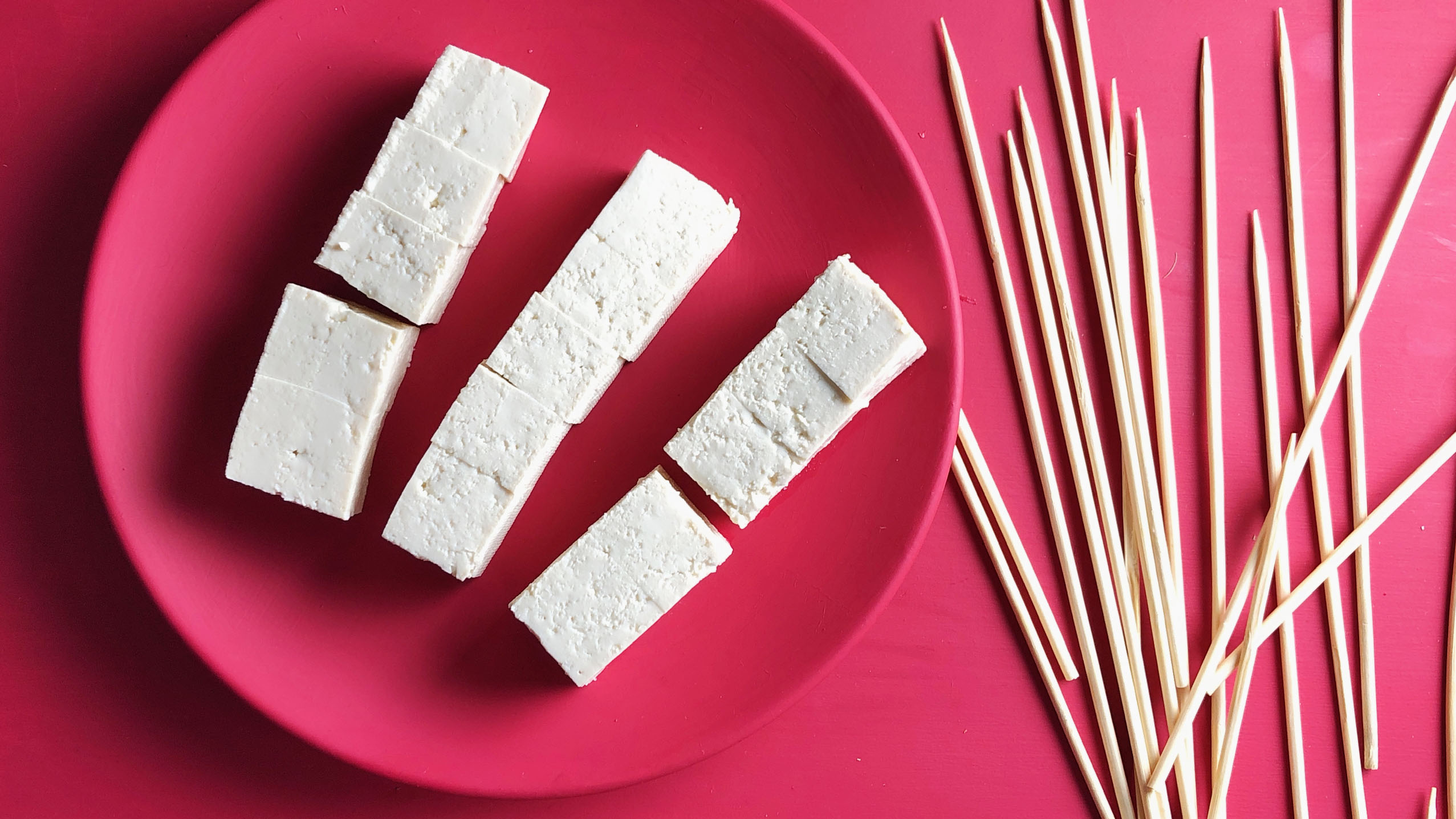
Tofu: protein amounts
Here's the protein content for 100 grams (about 3.5 ounces) of various types of tofu. These are averages, specific brands of tofu may contain varying amounts.
An easy way to remember which type of tofu has more protein, is to remember that the softer the tofu, the more water, and therefore less protein by weight.
Type of Tofu | Protein per 100 grams (3.5 ounces) |
|---|---|
silken tofu | 4.4 grams |
soft tofu | 7 grams |
medium firm tofu | 7 grams |
firm tofu | 8.2 grams |
extra firm tofu | 10.1 grams |
Edamame beans
Edamame beans are young (immature) soybeans that are green and soft.
Edamame beans can be purchased in their pod, or shelled. Look for shelled edamame beans in the freezer section of the grocery store.
Edamame beans are larger and firmer than green peas, with a buttery, slightly nutty taste. They make a great addition to soups and salads.
One cup of cooked edamame beans has 17 grams of protein.
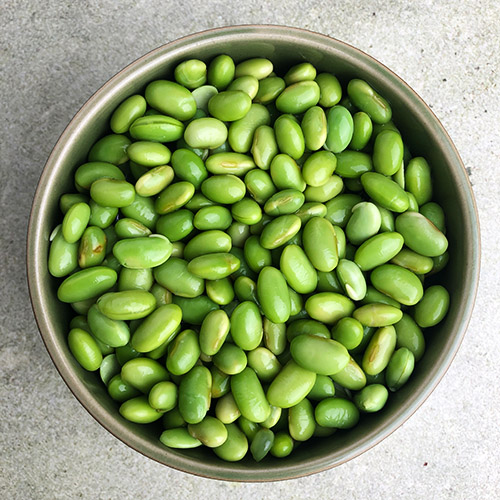
Edamame beans
SoY Curls
Soy curls is a trade-marked, commercial meat replacement product created by Butler foods. They come dry and must be rehydrated before adding to a dish. Once rehydrated, soy curls look like shredded chicken. They don't have a lot of flavour on their own, but do absorb seasoning well.
They are a one-ingredient product, made from soybeans. They are difficult to find in standard grocery stores but you can purchase them online or in some health food stores.
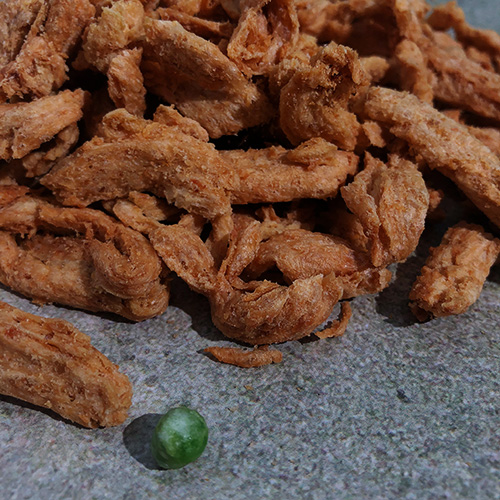
SoY Milk
Drinking soy milk, or using it in your cooking, is another way to get soy protein. For example, one cup of Silk brand unsweetened soy milk contains 8 grams of protein. Each brand of soy milk will have a different amount of protein, so be sure to check the label.
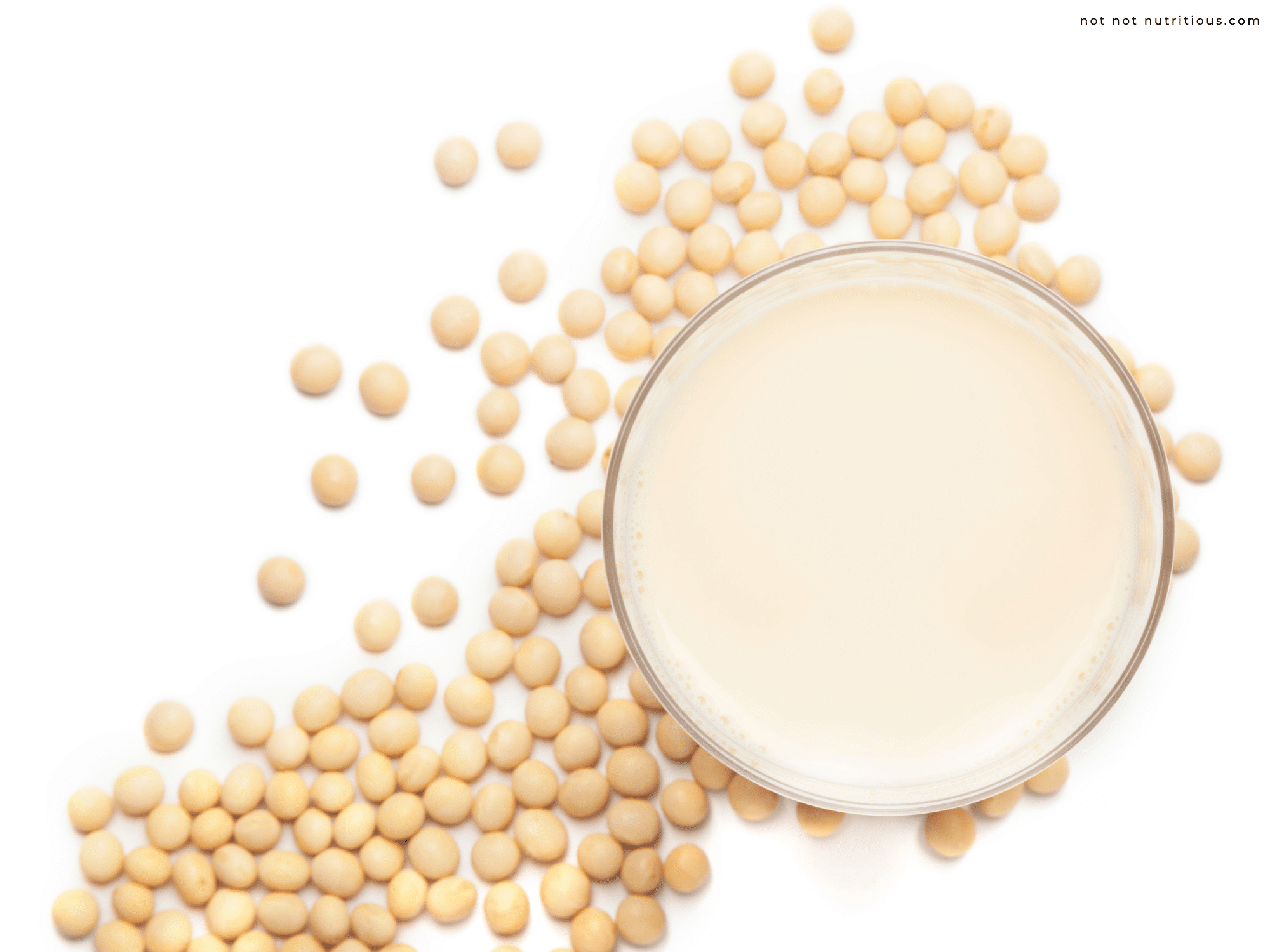
Textured Vegetable Protein
Textured Vegetable Protein or TVP is a one-ingredient meat-replacement made with soy flour. Also called Textured Soy Protein, or TSP, it's one of the original meat replacements. TVP is inexpensive and mild in flavour. It's typically rehydrated before using and easily absorbs seasoning, so it can be used in a variety of recipes.
Recipe Ideas
A light and creamy hummus that you can make in minutes, featuring fresh basil, lemon, edamame beans, and chickpeas. Perfect ...
La-la-sagna! GREEN lasagna that is! Just as cheesy as regular lasagna, plus it’s packed with all sorts of glorious green ...
Packed with veggies in a thyme-scented cream sauce, this dairy-free Veggie Pot Pie is quintessential comfort food. Prep time is ...
Make it easy to feed a mixed group of eaters with these Buddha Bowls with Pineapple Brown Butter Teriyaki Sauce. We’re going ...
Smoky and spicy with maple undertones, you’re going to love these vegan bacon bits sprinkled all over veggies, salads, and ...
Perfectly salted, crispy on the outside, soft and eggy on the inside, this Salty Crispy Tofu is going to change ...
Infographic: Soy in a plant-based diet
Soy products are very common in plant-based eating. You've likely hard of soy milk and tofu, but did you know that edamame beans are actually young, immature soybeans?
Soy is also the ingredient in textured vegetable protein, or TVP, one of the original meat replacements. We've used it to make our Vegan Bacon Bits in 60 seconds, and Lettuce Wraps: Vegan or with Pork.
You can click or tap the infographic to enlarge it and zoom in.
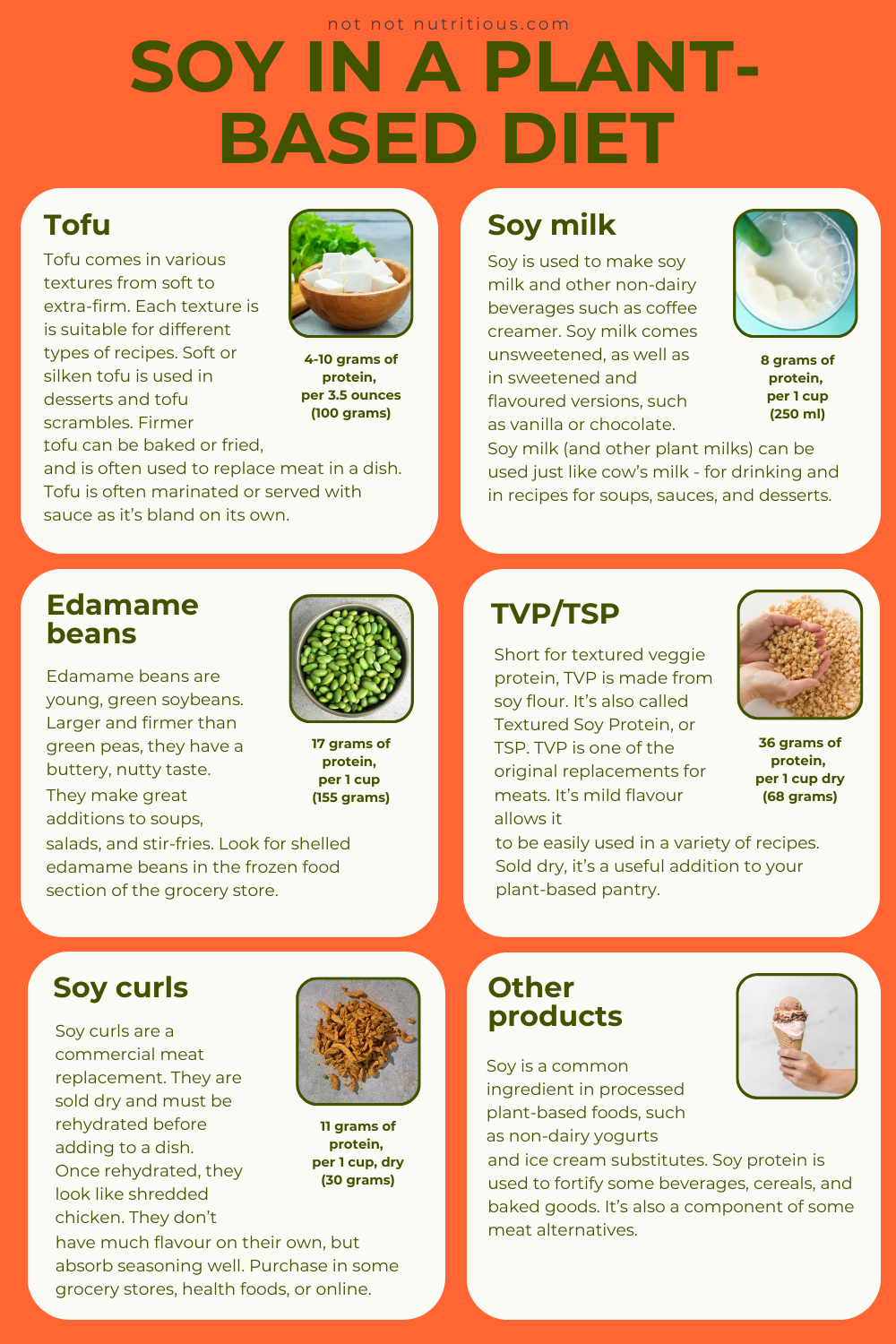
Peas
Description
Peas are part of the legume family.
Green peas and split peas are the same food. However, green peas are fresh, while split peas are dried and split. Because one-side of the split pea is flat, they are sometimes confused with lentils.
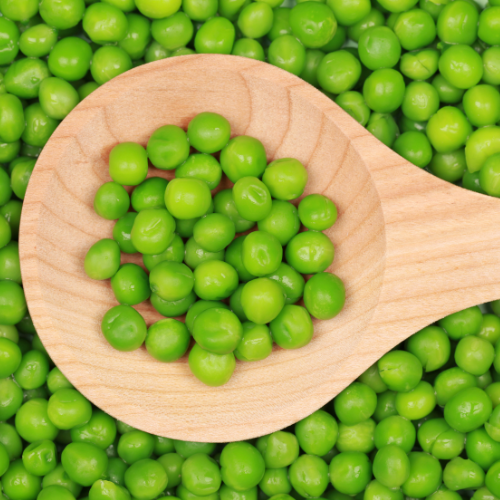
Green peas
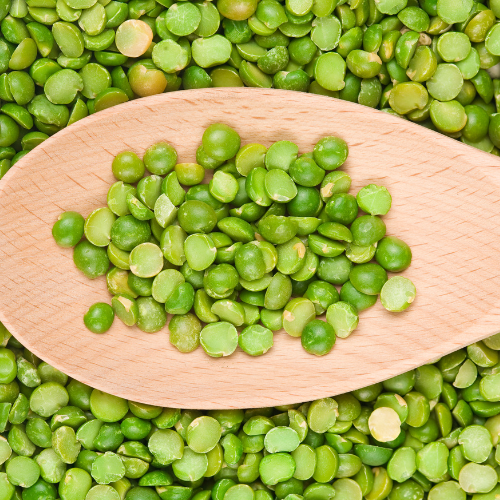
Split peas
The USDA groups green peas under the Vegetable category while they group split peas under the Beans, Peas, and Lentil category. The beans, peas, and lentils category are included in their Protein Foods group.
Protein
Green peas are a good source of protein, containing about 8 grams of protein per cup, cooked.
Split peas are an excellent source of of protein, containing about 16 grams of protein per cup, cooked.
recipe Ideas
La-la-sagna! GREEN lasagna that is! Just as cheesy as regular lasagna, plus it’s packed with all sorts of glorious green ...
Homey and satisfying, this Beyond Beef Shepherd’s Pie has a meaty base and a rustic topping of buttery mashed potatoes. ...
Packed with veggies in a thyme-scented cream sauce, this dairy-free Veggie Pot Pie is quintessential comfort food. Prep time is ...
Packed with zucchini and protein-rich green peas, these fritters are surprisingly rich for a plant-based recipe. As well as being ...
Two words: Whole grains
Whole grains and protein
Whole grains are the second major category of plants that are a good source of protein.
Grains include wheat, rice, oats, corn, barley, millet and rye. Although technically a seed, quinoa is usually classified as a whole grain.
Grains are frequently broken into two subgroups: whole and refined. Whole grains are more nutritious than refined grains and tend to be higher in protein.
The following infographic shows common whole grain products and how much protein they provide, per 100 grams uncooked. (100 grams is about 3.5 ounces.)
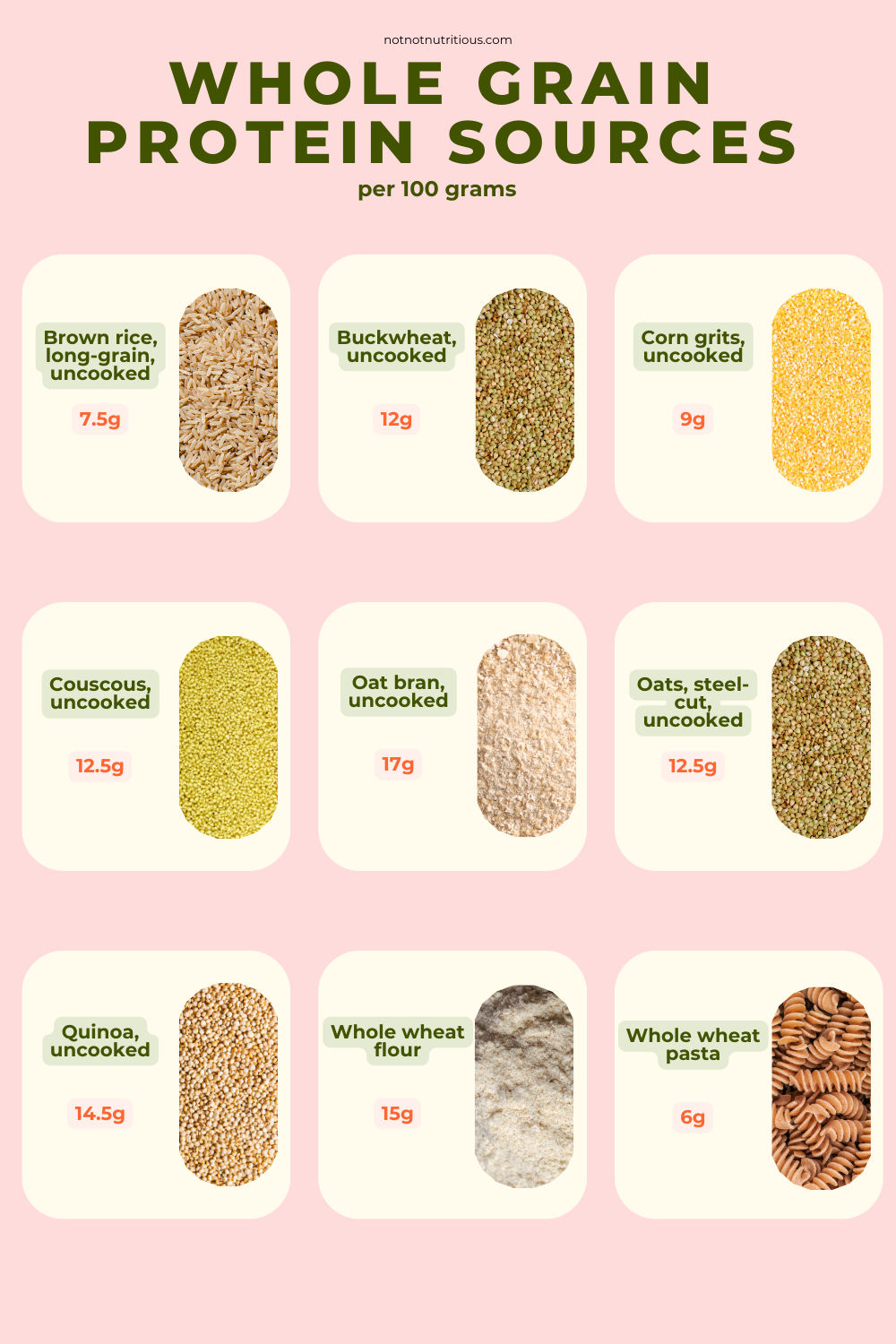
Three words: Nuts and Seeds
Nuts and seeds
Description
Nuts and seeds are our third category of foods that are excellent sources of protein.
Nuts include:
Editorial note: Seed section is coming soon.
Protein Amounts
Type of Nuts | Protein per 100 grams (3.5 ounces) |
|---|---|
Almonds | 21 grams |
Cashews | 18 grams |
Hazelnuts | 15 grams |
Macadamia nuts | 8 grams |
Peanuts | 26 grams |
Pecans | 10 grams |
Pistachios | 21 grams |
Walnuts | 15 grams |
recipe ideas
Perfect for breakfast on the go, these 1-bowl Zucchini Chocolate Chunk Muffins are full of goodness: toasted walnuts, nutty hemp ...
Light and lemony, these 1-bowl white chocolate chip cookies have a pale green hue from the not-so-secret ingredient: avocado. You ...
This Indian-inspired cashew sauce smells and tastes delicious! Featuring a mix of warm Indian spices, cashews, and cream or coconut ...
If you're new to plant-based eating, you might be looking for alternatives to dairy to use in creamy recipes. While ...
This vegan ricotta cheese is rich, creamy and a little bit sweet — just like traditional dairy ricotta. Using almond ...
Nut butter with attitude. Your choice of creamy or crunchy. All spiced up with cumin, coriander, ginger, garlic, hot chili ...
Infographic: Using nuts in plant-based cooking
Nuts are an excellent source of protein. You can eat them out of hand, or add to salads, stir-fries, and grain bowls for flavour, texture, and protein content. They can be added to cookies and other baked goods. They can be turned into nut butters and ground into flour. To jumpstart creamy, dairy-free recipes, try our almond-flour based Mother Mix.
Nuts are also used to make plant-based cheeses, such as our 1-minute Plant-based Parmesan, or 1-minute Vegan Ricotta.
You can click or tap the infographic to enlarge it and zoom in.
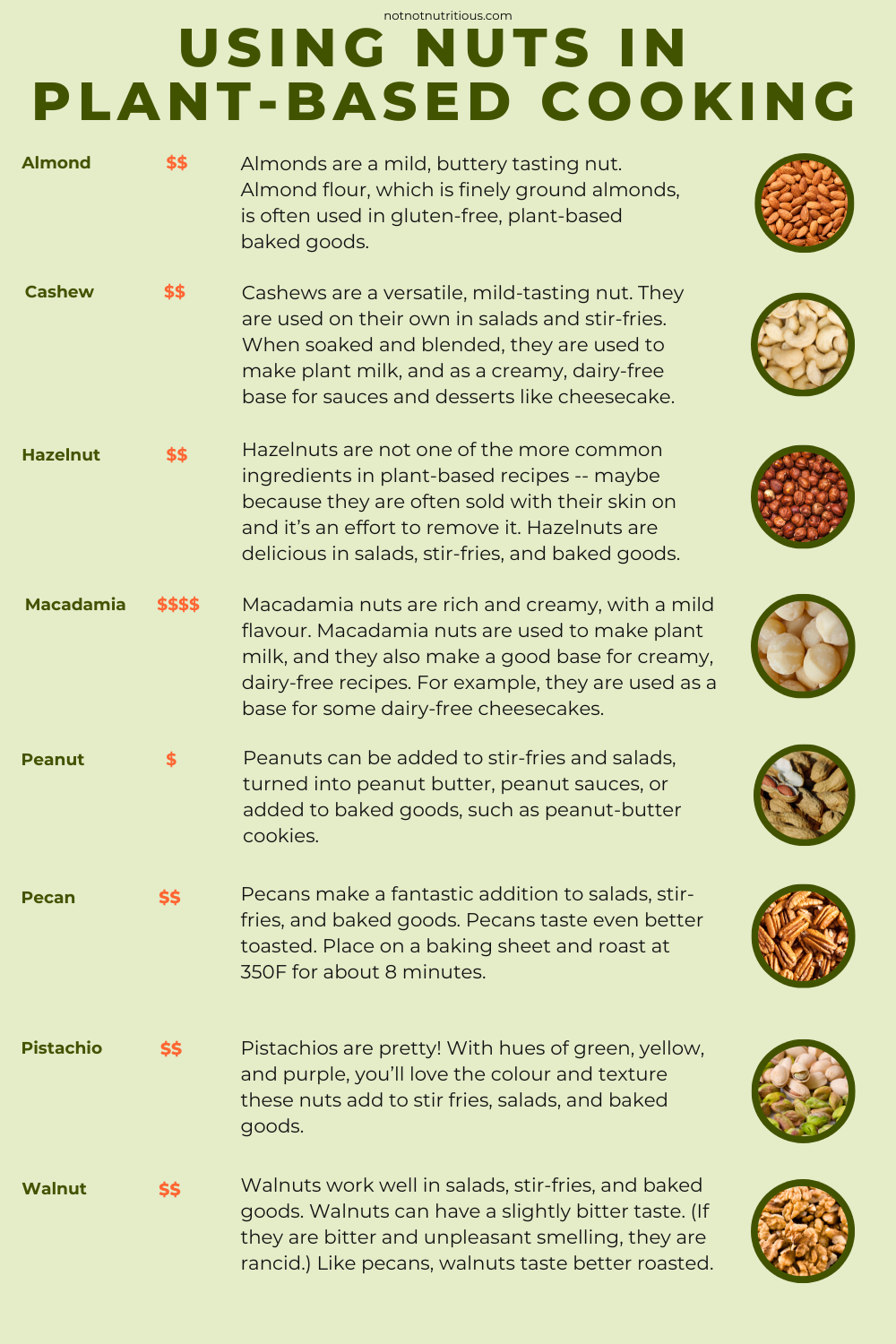
Four Final words: Multiple proteins are key
How to get a protein-packed plant-based meal
If your goal is a protein-packed, plant-based meal, then the key is to layer proteins.
For the base of your meal choose a whole grain, such as brown rice or quinoa. Next in the layer go for a legume, such as black beans or chickpeas. Then add a few different vegetables (all have some protein) into the mix. Finally, bring everything together with a sauce (our example is made from soy milk and blended nuts) and top off with a sprinkle of nuts.
The infographic below provides an example of a meal with over 32 grams of protein (the recommended daily average is about 50 grams).
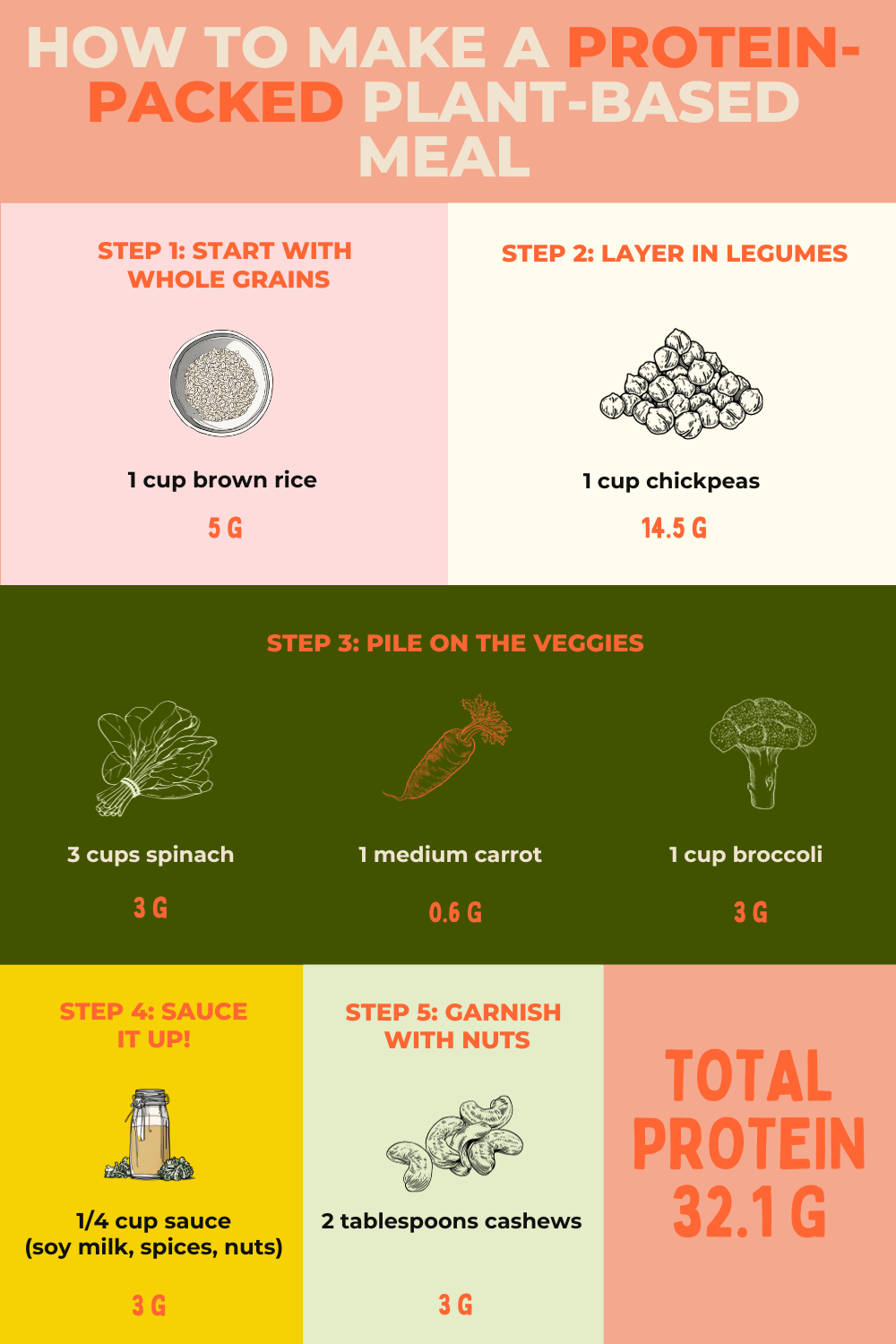
How much protein do I need?
There's no consensus on how much protein an individual needs.
Typically, people use one of two methods for determining their protein requirements:
Government guidelines
Diet specific guidelines
Many diets state protein requirements as a ratio compared to fat and carbohydrates, the other two macronutrients. This is sometimes referred to colloquially as "macros."
For example, the whole food plant-based diet (WFPB) recommends 10% of your calories come from protein, 10% from fat, and the remaining 80% from carbohydrates.
Once you determine the percentage of your diet that should consist of protein, you can quantify the amount in grams per day based on your calorie requirements. See a sample protein calculation.
Sample protein calculation
This is Julie. She wants to eat 2000 calories a day and wants to calculate how many grams of protein she needs to eat to meet these requirements.
Determine desired calorie intake
Julie's desired calorie intake is 2000 calories a day.
Your calorie intake will vary depending on your age, sex, and activity level.
Determine desired ratio of protein to fat and carbohydrates
Julie wants to follow the whole- food plant-based macronutrient guidelines of 10% protein, 10% fat, and 80% carbohydrates.
Calculate the number of protein calories needed
10% of 2000 calories = 200 calories of protein needed
Calculate the grams of protein needed to equal the amount of calories
Note: 1 gram of protein = 4 calories
To determine how many grams of protein you need, divide the 200 calorie allotment by 4 (as each gram of protein is 4 calories).
200 divided by 4 = 50
Therefore, Julie needs to eat 50 grams of protein to meet her nutritional requirements.
Sidebar: calculating Calories by counting Macronutrients
You can calculate how many calories are in a specific food if you know how many grams of protein, fat, and carbohydrates it contains. Protein has 4 calories per gram, as do carbohydrates. Fat has 9 calories per gram.
Protein
Fat
Carbohydrates
For example, one serving of Lentil, Lemon, and Dill Soup has 20 grams protein, 19 grams of fat, and 42 grams carbohydrates.
Protein
Fat
Carbs
20 g x 4 calories = 80
19 g x 9 calories = 171
42 g x 4 calories = 168
Total calories = 419
Finding nutritional information in recipes
Recipes on not not nutritious include nutrtitional information in the Recipe Card.
